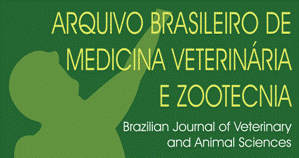ABSTRACT
The aim of this study was to evaluate the use of polyamide 12 intramedullary rods in osteotomized humerus in cockerels (White Plymouth Rock) and analyze, by radiography and histopathology, bone consolidation and the formation of bone callus. Ten cockerels were subjected to transverse osteotomy of the right humeral diaphysis followed by the insertion of polyamide 12 locked rods, with two nails in each bone fragment. Radiographies obtained at the immediate pre and post-operative period, and every 7 days for 3 months revealed no perioperatory complications. Radiography revealed a radiopaque bone callus between the 4th and 5th week post-surgery. Histopathology detected an amphophylic material (polyamide 12 rod) in the intramedullary region and the proliferation of highly vascularized connective tissue between the rod and the cortical bone. This connective tissue was highly cellular with differentiation into osteoblasts. The collagen fibers varied from loose to dense and a differentiated bone matrix, containing osteocytes in gaps and the development of bone marrow, was also observed; indicating the formation of a bone callus without signs of implant rejection. The polyamide 12 intramedullary rod was effective in the stabilization of the fractures used in this experimental model, with no rejection reaction for at least 90 days.
Keywords:
avian; osteosynthesis; orthopaedics; bone union; milling

 Thumbnail
Thumbnail
